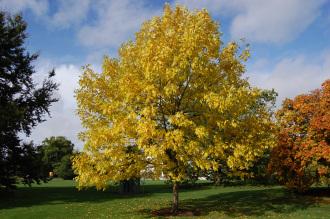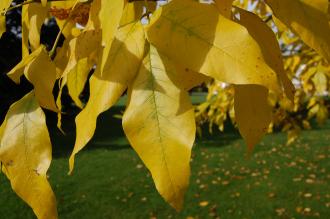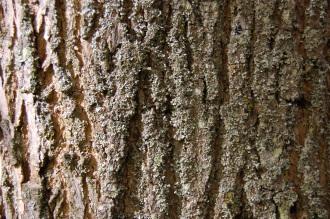
Fraxinus pennsylvanica (21/10/2013, Kew Gardens, London)
Position: Full sun
Flowering period: Spring
Soil: Damp, well drained
Eventual Height: 25m
Eventual Spread: 15m
Hardiness: 2a, 2b, 3a, 3b, 4a, 4b, 5a, 5b, 6a, 6b, 7a, 7b, 8a, 8b, 9a
Family: Oleaceae
Fraxinus pennsylvanica is a deciduous tree with an upright, oval habit. Its mid green leaves are odd pinnate, up to 30cm long and contain up to 9 leaflets. Each leaflet is ovate with mildly serrate margins, up to 15cm long and 9cm broad. Its leaves turn yellow in autumn before they fall. Its trunk may achieve a diameter of up to 60cm. Its bark is smooth and gray when young, becoming fissured with age. Its green/ white dioecious flowers are small and borne in dense clusters, appear at the same time of the leaves. Its flowers are wind pollinated and are not self fertile. Its fruit is a sumara which is up to 75mm long.

Fraxinus pennsylvanica Leaf (21/10/2013, Kew Gardens, London)
Fraxinus pennsylvanica, commonly known as the Green Ash or Red Ash, is native to the east and central USA and south central Canada. In its native habitat it is found in moist areas and stream banks. This tree is under threat in some areas of the USA by the Emerald Ash Borer, introduced from Asia.
The etymological root of the binomial name Fraxinus is from the ancient Latin name for Fraxinus excelsior. Pennsylvanica is derived from the Latin meaning ‘from Pennsylvania’.
The landscape architect may find Fraxinus pennsylvanica useful as a street tree due to its upright, tidy habit and its tolerance of urban atmospheric pollution.
Ecologically, Fraxinus pennsylvanica seeds are eaten by numerous birds and mammals.

Fraxinus pennsylvanica Bark (21/10/2013, Kew Gardens, London)
Fraxinus pennsylvanica prefers damp, deep, humus rich, poorly-drained soils. It tolerates most pH of soil. It will not tolerate dry soils.
Fraxinus pennsylvanica requires little maintenance.

